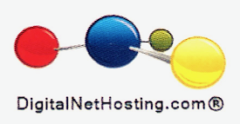A Quick Introduction to Managed Servers
Customers are increasingly aware of the need to back up their sites with a well managed server. Typically, the managed option often only extends to managing the operating system (and possibly hardware) of the server in question, i.e. updating the operating system with the latest security patches (something that an “intelligent” control panel, such as cPanel, can handle itself, mostly), latest package upgrades, and generally making sure the server works as intended.
In most cases, managed does not, however, cover application issues. This, however, is a crucial point: You as the customer need to be sure that the server administration side of your enterprise speaks the same language as the application development side. Nothing is worse than an eager sysadmin updating a software package without consulting the developers who, incidentally, depend on the older version for the entire site to run smoothly. With nowadays globalisation, this can cause you additional grief – often your developers are from a different company than your ISP, and often they (as is natural) will defend themselves in taking the blame. It will leave you and your enterprise crippled or hindered.
What do we advise?
- Don’t save money on a sysadmin.
- Make sure your sysadmin talks to your developers and understands what they need.
- Make sure your sysadmin has a basic understanding of your application in case of emergencies.
- Make sure your staff: your sysadmin and developers coordinate updates and upgrades.
- Make sure you have a working test environment where you can run the updates and upgrades in a sandbox to see if afterwards things still work the way they are expected to run.
- Have a teamleader coordinate your sysadmin(s) and developer(s), or take this role upon yourself.
How much is it going to cost you?
Fully managed packages vary in cost – the normal sysadmin packages that deal with the operating system only will up your budget by anything between GBP 20 to GBP 200 per month, if you want the sysadmin to be an integral part of your team and support your application as well (in terms of coordinated server management), then the price will be more to the higher end of that range, but might possibly also include some support for the application as well already.
Who to hire?
Get someone with experience. There are sysadmins out there who have decades of experience and know the do’s and dont’s, and there are sysadmins who consider themselves divine just because they have been “into linux for 2 years”. A sysadmin is not someone who jumps at the first sight of an available package upgrade and yum installs 200 dependencies to claim he has a system up to date. A sysadmin is someone who understands the implications of a) upgrading and b) not upgrading. A sysadmin will weigh these pros and cons and explain them to you before making suggestions as to what to do. A sysadmin is someone you trust to even take this decision off your shoulder so you can run your business instead of having to worry whether the next admin cowboy is going to blow up your server. A sysadmin is someone who knows not only how to keep a system alive, but also how to bring a failed system back to life.
Source by Bernhard Lorenz

